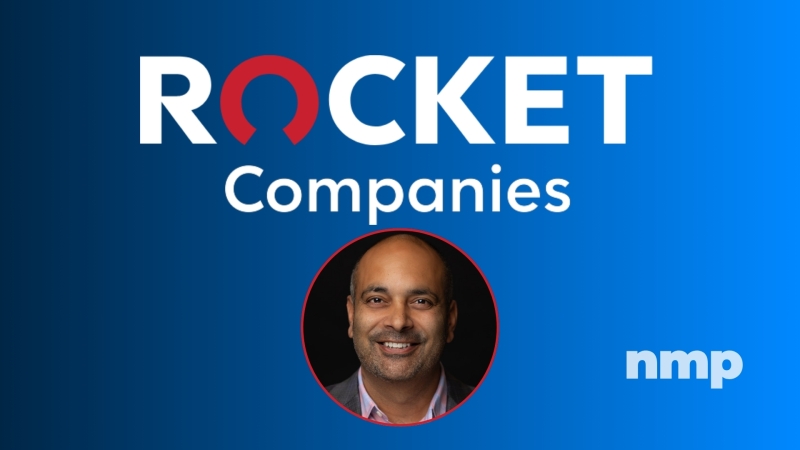As a result of the new legislation that takes effect on April 1, 2011, mortgage brokerage firms and their loan officers will be faced with the game-changing decision of how to receive compensation going forward.
Mortgage brokerage firms and their loan officers (collectively known as ‘brokers’) will have two options offered: ►Receive compensation only from the lender in the form of a fixed percentage fee per loan (the broker will choose from multiple fixed percentage tiers); ►Receive compensation only from the consumer in the form of an origination fee (points). Both of these compensation options come coupled with serious drawbacks and issues unique to the broker. In addition to the above choices, compensation to the broker will no longer be able to vary with the terms or conditions of the loan (interest rate). This means that brokers will no longer be able to earn additional compensation from “up-selling” an interest rate to a consumer, nor will they have the ability to charge more for loans that require additional work or time spent originating them. Lastly, the broker will be forced to comply with the new anti-steering provisions which were designed to prevent them from directing or “steering” a consumer to consummate a transaction based on the fact that the broker will receive greater compensation versus another type of loan they could have offered. To comply with this rule, brokers will be required to disclose three pricing options per loan to the consumer: ►The lowest interest rate; ►The lowest interest rate and point combination; and ►The lowest rate with the least risky features. The unfortunate but inevitable conclusion of this legislation is that the broker model will no longer be able to exist in its current format, if at all. In fact, a broker will be at a significant disadvantage to a lending institution (mortgage bank), since lending institutions are shielded from the anti-steering prohibitions and can continue to receive compensation tied to the interest rate from selling the loans in the secondary market. Receiving compensation from the consumer only The legislation clearly defines the loan originator and the mortgage brokerage firm as the same entity (e.g. the broker = loan originator = mortgage brokerage firm). Why this is an issue is that if the broker decides to operate under the model of receiving compensation only from the consumer (origination points), they are forbidden from passing along that income to any of the loan originators working in the brokerage firm. “Proposed § 226.36(d)(2) would provide that, if a loan originator is compensated directly by the consumer for a transaction secured by real property or a dwelling, no other person may pay any compensation to the originator for that transaction.” To reiterate, if the consumer pays the brokerage firm origination points, then the brokerage firm cannot share that payment with any of its loan originators. This is because the law prohibits sharing compensation and further considers the loan originators LOs can only receive a payment outside of origination income collected by the brokerage firm, such as a salary. Receiving compensation from the lender only The “Lender Only Model” also comes riddled with challenges for the broker. This is due to the margin of compression created from the anti-steering provisions and disincentive the lenders have to maximize profits for the broker. The issue is seen more clearly if you examine it from the standpoint of the Lender. For this example let’s consider Lender A and Lender B. In our example, Lender A initially decides to keep their brokers as motivated as possible by offering them the highest fixed percentage tier per loan of 2.5 percent. Lender B however, caps their highest fixed percentage tier at 1.5 percent. By default, in our example, Lender B will have more competitive interest rates for the consumer than Lender A. Consequently, Lender A’s volume will dramatically suffer, forcing them to provide more competitive rates to the consumer. To do this, Lender A will have to offer a lower fixed percentage tier to brokers, a tier structure that is likely in line with that of Lender B. This all leads to margin compression for the broker. When you couple this fact with the anti-steering provision that is going to require the broker to reveal the lowest rate to the consumer, the broker and the consumer will always default to Lender B. This will further encourage Lender A to reduce its payout and lead to additional margin compression for the broker. In effect, if you are Lender A, by agreeing to pay a broker more, you reduce your ability to create a product that will be competitive with the other lower cost options being shown to the consumer from Lender B. Hence, over time, the competitive pressures both lenders face will minimize the compensation to brokers so as to minimize costs to the consumer and maximize volume for the lenders. In addition, brokers themselves will not be able to take the highest margin alternative offered by a lender since the broker will find themselves in an anti-competitive position versus other brokers who might have chosen a lower fixed percentage tier. This, combined with anti-steering provision which requires brokers to show the lowest interest rate option to the consumer, will make it quite difficult for the broker to elect the highest fixed percentage tier from the lender, thus requiring them to take a lower compensation plan. Additionally, for the broker who chooses to get paid by the lender, in a competitive situation, the broker will be at a serious disadvantage. This is because the broker cannot change their compensation model on a deal by deal basis to match the pricing from another broker who has previously decided on a lower compensation model, and unless they violate the anti-steering provisions, they will lose the consumer. How to survive? Unfortunately, it would appear the only way to survive as a broker is to have a high volume, quick turnaround time, no overhead costs, and no other loan originators at the brokerage firm. The brokerage firm inevitably becomes a “one-man-shop” for two reasons: ►A result of the margin compression is that a broker’s earnings will contract to a point where even just the overhead costs associated with running a brokerage firm will prove to be unbearable; and ►Since the broker cannot split origination points with its loan originators, its ability to retain any of its loan originators will be put into jeopardy. More likely than not, any of its “quality” LOs will leave to join a lending institution where an opportunity to earn a reasonable income will still exist. Additionally, the broker is going to find the ability to abide by the anti-steering provisions to be very overwhelming, which will lead them to reduce the number of lenders they work with to as few as possible. This, in effect, defeats the added value the mortgage broker “brings to the table,” and puts into question their very existence. Recently, I was speaking to the head of a 20-year-old brokerage firm who expressed his frustrations to me by saying, “I would rather close up shop because of something I did than some regulations the government imposed.” So much for survival of the fittest … Update 04/06/11: With the passage of the law and the recent lift of the “stay” of the LO compensation rule, there will be an opportunity for those who created a fair compensation plan to benefit from the turmoil in the industry. U.S. Mortgage Corporation takes pride in knowing that our new compensation plan which we are referring to as the “Freedom Plan,” is both fair, simple and equitable. Change always has a silver lining and the clear goal is to take full advantage of it. Steven A. Milner has nearly 30 years of experience in the mortgage industry, having started his career as a loan officer in 1981 in New York. Currently, Milner is the founder and chief executive officer of U.S. Mortgage Corporation d/b/a Mortgage Concepts, a highly esteemed new York State-licensed mortgage banking corporation he founded in 1994. He may be reached by phone at (631) 580-2600 x114 or e-mail [email protected]. Disclaimer: The views expressed in the following article do not necessarily represent the views of National Mortgage Professional Magazine or the associations we represent.
Get the NMP Daily
Essential stories, every weekday.
Email Address





